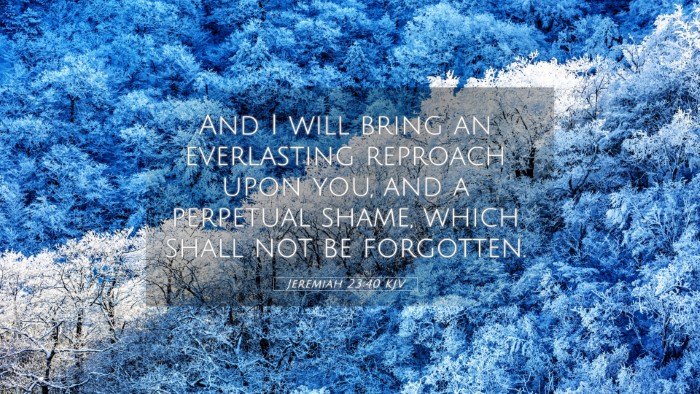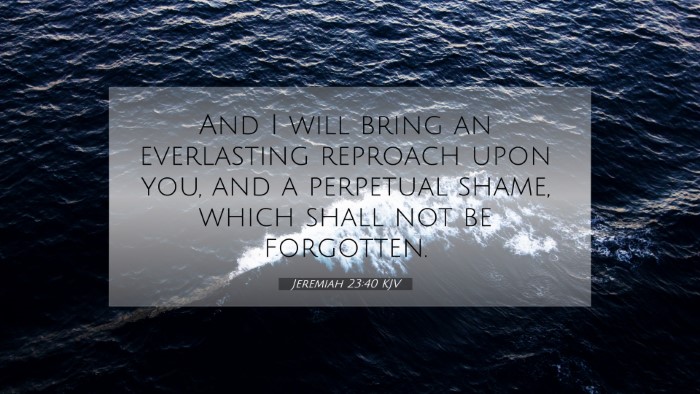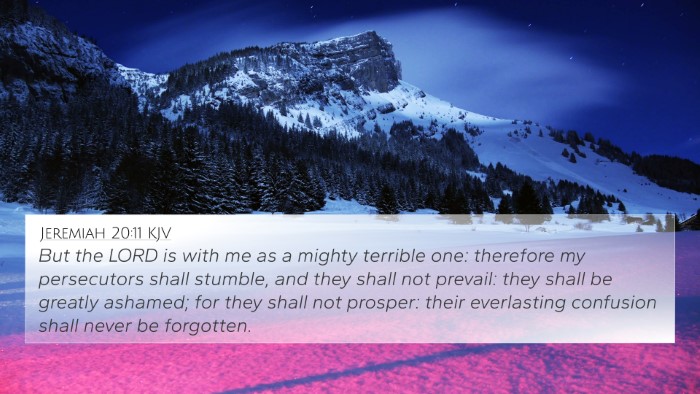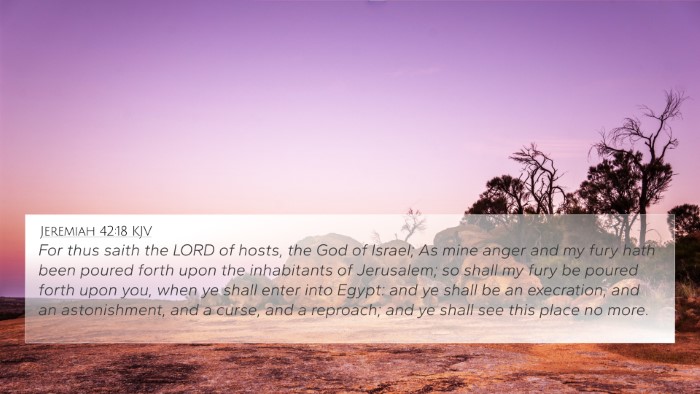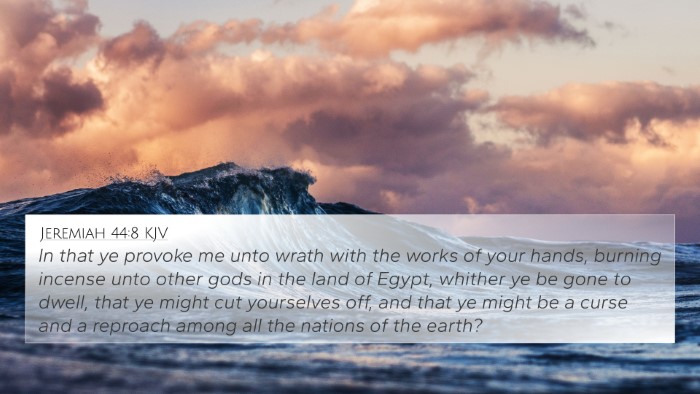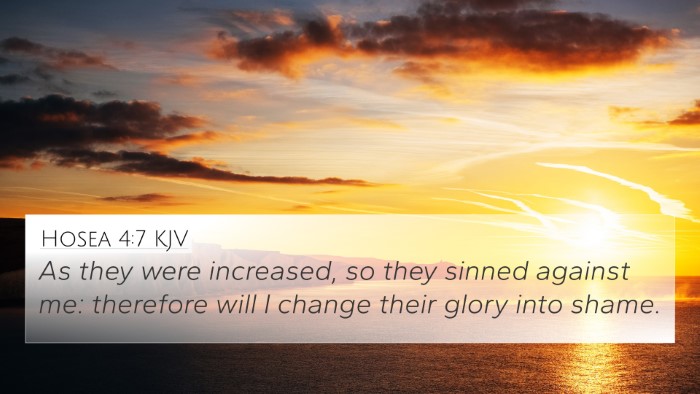Understanding Jeremiah 23:40
Jeremiah 23:40 states:
"And I will bring an everlasting reproach upon you, and a perpetual shame, which shall not be forgotten."
This verse speaks to the serious consequences of false prophecies and the failure to shepherd the people of Israel correctly. The content of this verse, when analyzed through various public domain commentaries, reveals a profound understanding of God's judgment and the moral order established in Scripture.
Verse Context
To fully appreciate Jeremiah 23:40, one must consider the broader context of the chapter, where God expresses His displeasure with the prophets who mislead His people. This chapter illustrates the themes of judgment, restoration, and the righteousness expected of leaders.
Insights from Commentaries
**Matthew Henry** emphasizes the severity of God’s judgment on false shepherds, suggesting that the reproach mentioned indicates the spiritual disgrace that will follow their unfaithfulness. He argues that God’s full knowledge and memory of their sins ensure that shame will not be overlooked.
**Albert Barnes** allows for a more thematic exploration and highlights the idea that the reproach is not just societal but eternal. He suggests that this verse signifies a clear demarcation between true prophets and impostors, warning that those who mislead will face consequences that extend beyond their earthly life.
**Adam Clarke** focuses on the notion of 'perpetual shame' and connects it to the Israelites' historical struggles. He illustrates how this judgment serves as a reminder of God’s unwavering standards and the ultimate accountability that leaders have towards their communities.
Key Themes
- Judgment of False Prophets: A consistent theme within the prophet Jeremiah, emphasizing accountability for spiritual leaders.
- Everlasting Reproach: An indication of God's permanent disapproval which serves both as a warning and a lesson for future generations.
- Historical Context: Reflecting on Israel's history to understand future implications.
Bible Verse Cross-References
- Jeremiah 14:10 - Discusses the unfaithfulness of the people.
- Ezekiel 34:10-16 - God's indictment against the shepherds of Israel.
- Matthew 7:15 - Warning against false prophets in the New Testament.
- 2 Peter 2:1-3 - Peter describes false teachers and their destructive ways.
- Revelation 22:15 - Finality of exclusion from the Kingdom of Heaven for the unrepentant.
- Isaiah 66:24 - The eternal shame of the wicked is mentioned.
- Hebrews 10:27 - The expectation of judgment for sinning willfully against God's Word.
Comparative Bible Verse Analysis
This verse invites a closer look at how it connects to other scriptures.
- **Connections between Old and New Testament:** Jeremiah's warnings about false prophets serve to illuminate Christ's teachings on discernment.
- **Cross-referencing Biblical texts:** By linking this verse with Matthew 7:15 and 2 Peter 2:1-3, one can see a comprehensive continuum of God's warning against falsehood.
- **Thematic Bible verse connections:** The concept of shame as a result of falsehood spans both Testaments, showing that God's principles are consistent.
Practical Applications
Understanding Jeremiah 23:40 has implications not only for theological study but also for personal reflection and practice:
- **Self-Examination:** Encourage believers to verify the teachings they receive against Scripture.
- **Responsibility of Leaders:** Leaders are urged to uphold the truth, recognizing their role in guiding others.
- **Community Awareness:** Fostering an environment where accountability and truth are prioritized in church settings.
Conclusion
Jeremiah 23:40 serves as a sobering reminder of the consequences of forsaking the truth. By employing tools for Bible cross-referencing, readers can uncover deeper connections and themes that enrich their understanding of this and related verses. It underscores the importance of discernment, accountability, and fidelity to God’s message as a community of faith.
As you seek to understand this verse further, consider how cross-references and thematic links shape its interpretation and application to our lives today.

